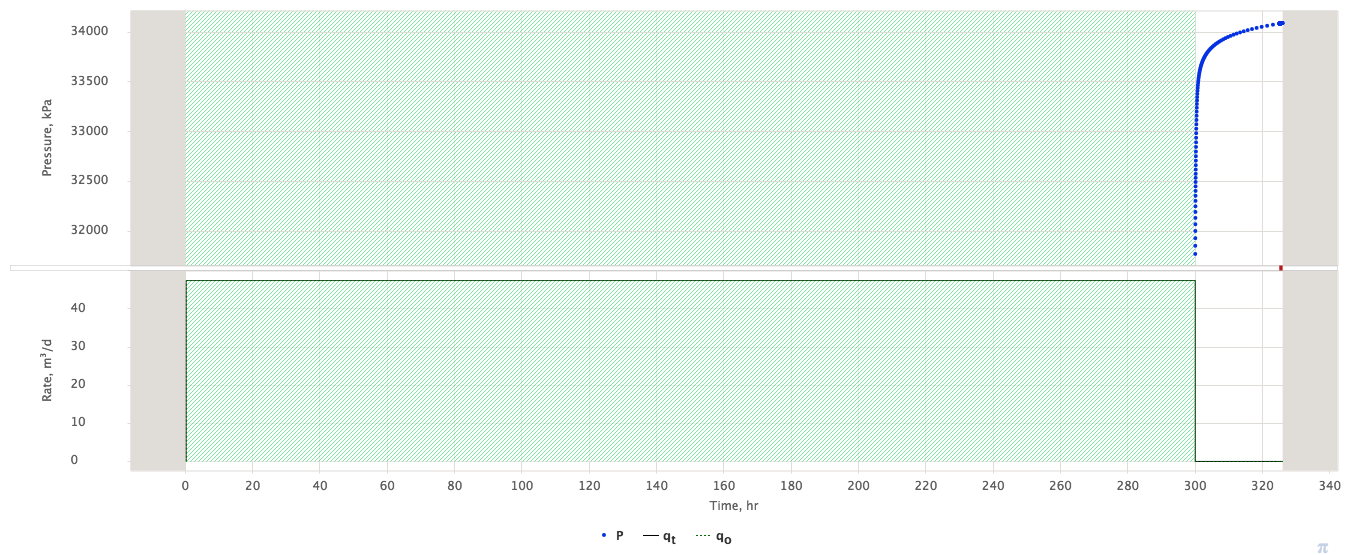
Specific schematic of Pressure Test consisting of long-term shut-in, followed by FLOWING survey (Drawdown / Injection) then followed by SHUT-IN survey(Build-up / Fall-off) (see Fig. 1).
|
| Fig. 1 – Horner Test schematic |
The interpretation of Horner Test can be performed by conventional pressure diffusion models fitting.
But historically it was given a specific popularity due to computational simplifications from using the Superposition Time concept, particularly when the following conditions hold true:
| Condition 1 | |
|---|---|
| Condition 2 |
In this case the pressure diffusion during the SHUT-IN period can be simulated as:
p_{wf}(\Delta t) = p_e - \frac{q_t}{4 \pi \sigma} \, \ln \left( 1 + \frac{T}{\Delta t} \right) |
The equation shows that pressure during this period of time is not dependent on skin-factor
and pressure diffusivity
but provide an easy linear way to assess formation pressure
and formation transmissibility
.
The benefits of this interpretation method is that:
It should be mentioned that in modern Pressure Transient Analysis the above Condition 1 and Condition 2 are not required and one can use the powerful arsenal of modern softwares to fit the pressure readings with pressure diffusion models.
Petroleum Industry / Upstream / Subsurface E&P Disciplines / Well Testing / Pressure Testing / Pressure Transient Analysis (PTA)
|